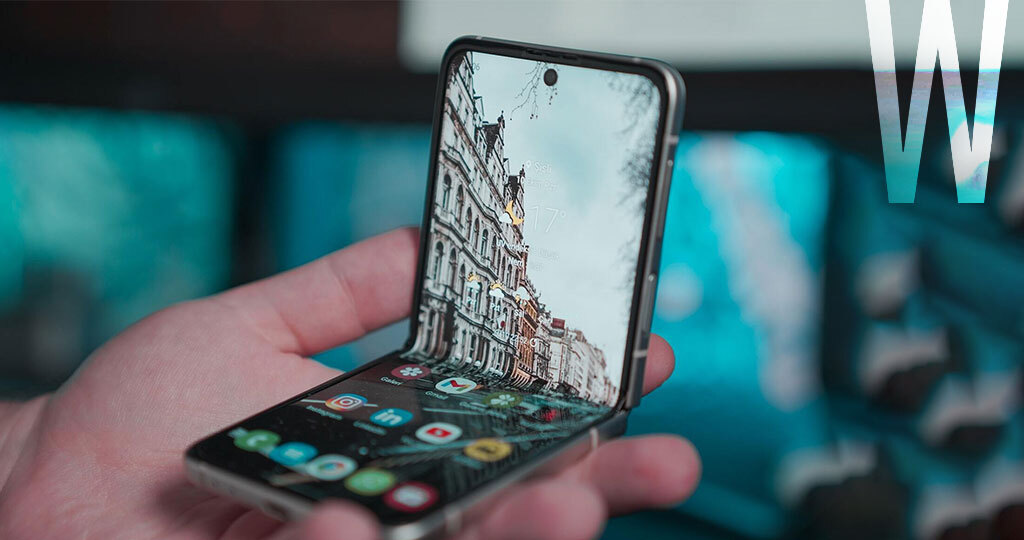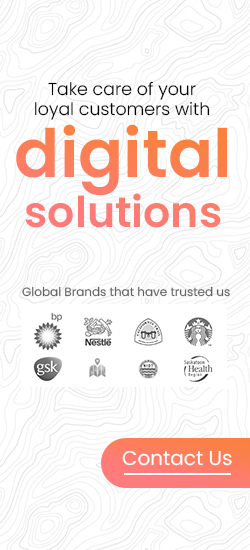Designing for Flexibility: A Comprehensive Guide to Developing Apps for Foldable Smartphones

Introduction
Recently, the smartphone industry has introduced foldable technology for smartphones. The impact is far-reaching, despite how it looks at the surface. Users can create immersive and detailed experiences because foldable phones use multi-window APIs. For example, apps that offer video streaming can utilize increased screen size to rotate videos in a more substantial orientation or to provide additional controls and features.
Global smartphone markets are being reshaped by foldable smartphone app development. Despite the fact, that it provides valuable features and functionalities to customers, the foldable device ecosystem is still at an early stage. Apps for foldable devices are expected to become increasingly popular in the high-end smartphone market.
The market saw the introduction of a new player after Samsung debuted the Galaxy Z Fold in 2019. This one-of-a-kind design has arrived to break up the monotony of traditional smartphones. Will foldable devices replace modern smartphones? Everything hinges on how well they perform.
If you’re looking for a proper approach to deal with both the design and development sector of applications for these versatile devices, this blog will come in handy. Here are the considerations and changes we must make when developing apps for foldable mobile app solutions.
Flexibility is essential when developing foldable apps
Operating systems are preparing to enhance smartphone experiences as the era of flexible smartphones dawns. However, the challenge is to make the experience seamless for both 2 screen and single-screen devices.
Here are a few things to consider when designing foldable mobile app solutions.
Two-screen mobile app screen
Every foldable app is available in two states such as folded and unfolded. The extra app space available could be used for other necessary actions.
Multitasking ability
Simultaneously, a mobile device can run two applications but more than three applications require additional consideration. Multi-window mode is therefore prioritized by mobile app development companies.
Adjustable mobile screen
There are foldable phones with small and heavy screens available. In such cases, it was discovered that the app that was frequently used had its activities resumed.
Test all potential scenarios
Compromises on application orientation, screen resolution, and so on would be a bad idea. Choosing what is workable for you is required to build an impenetrable application.
Ensure the uninterrupted app experience
When converting an application’s screen from folded to unfolded, a smooth transition is required. Any interruption during the process may force users to uninstall an app.
Application development
Since you use your phone to explore different mobile apps and everything else on your device, an app must be designed accordingly. The design parameters will undoubtedly change as a result of this. Consequently, low-cost mobile app development needs to be a priority.
What are the main considerations for developing apps for foldable smartphones?
Folded State
When folded, it resembles the current phone, which can be operated with a single hand. Every OEM approaches this experience differently. For example, the Samsung Galaxy Fold employs a separate 4.58″ screen known as the Cover Display, whereas Huawei employs the same screen in a folded technology state.
Unfolded State
Even, if it takes a different approach to dealing with the experience. For example, In Galaxy, the phone unfolds inwards, whereas Huawei unfolds outwards.
One-Handed / Two-Handed Mobile Design
As the state changes, so does the experience. A mobile device can usually be operated with one hand, but when unfolded, two hands would be required. In the current devices, even unfolding the device requires two hands.
Multi-window
There is a lot of space to work with. To develop a multi-window app for foldable mobile devices to enable multitasking, so we must always consider all the applications a user may be running in addition to the apps we design.
What are the challenges faced by foldable smartphone app development?
Let’s examine the challenges that foldable mobile technologies will present to designers and developers.
- App UI accessibility issue
- Multiple windows running simultaneously
- Workflow experience
- Adjustment of screen ratio
- Switching orientation
- Thickness
- Curve
- Screen durability
Difference Between Foldable and Non-Foldable Smartphones
| Foldable smartphones | Non-Foldable smartphones |
|---|---|
| The display is split into two panels that connect with hinges. | A standard flat-screen display is displayed on the only screen. |
| A second full-size display will provide more screen space. | The work is done on a single screen. |
| Multiple apps on two different scenes can be multitasking better. | No extra space on the screen between the two apps. |
| Contrary to regular ones, these are thicker and heavier. | Compared to folding models, they are slimmer and lighter. |
Step-by-Step Process of Developing Foldable App
The foldable smartphone app development goes through 6 stages.
1. Market and competitor research
It is impossible to develop an app without first conducting market research and identifying competitors. This stage will help you get answers to the following questions:
- What industry would you like to see a foldable device app developed for?
- What advantages will your app offer users?
- What feature would you like to add?
2. App concept verification
Knowing the answers to the questions above will allow you to finalize the app concept, and start deciding on the final list of features, how users will interact with your app, and the unique selling point.
3. App monetization plan
In this stage of development, you can create a business model to monetize your foldable smartphone app.
4. UX/UI Design for Foldable Apps
Create your app with all of the nuances of developing apps for foldable devices in mind. The item must be feature-rich and user-friendly, taking advantage of the larger screen of the foldable smartphone. When developing any app, scalability, and security should be taken into account. The design should be adaptable, allowing new features to be added with each iteration
5. Powerful marketing plan
Creating an app is no longer enough. You must develop and implement a market strategy if you do not want your efforts to be in vain
6. IT development selection
If you are not a technical developer and do not wish to deal with the development phase, you must select the best mobile app development company like Way2Smile Solutions to help you turn your mobile app ideas into a successful digital product. This is an important stage because selecting the wrong partner can cost you a lot of time and money.
Here’s how to lower your risks and find a company that will be a reliable technical partner:
- Start your search on websites
- Look through their portfolio for similar projects
- Ask the right questions to determine the company’s expertise
- Examine customer feedback from current and previous customers
- Choose the company based on location convenience
Consider these features when developing an app for foldable smartphones
Larger screens, more convenient experiences, richer and immersive user experiences, multitasking with multiple windows, less power-hungry displays, and more are all available. Let’s dive deeper into some of the most important mobile app features for foldable devices.
Customizability
Getting started with mobile app development should ideally be compatible with both small and large screens. When testing apps for foldable devices, the resizability factor must be taken into account. Designs and interfaces of mobile apps must fit perfectly into the fold and features of smartphones. Additionally, smartphones should maintain consistency in terms of size and shape when using foldable devices.
Multiple-Window Capability
You can develop a multi-window app for foldable mobile devices that can allow users to run multiple apps on the same screen at the same time. As a result, when testing apps for foldable devices, it is critical to consider multi-window compatibility. Mobile apps should be designed in such a way that multitasking with different screens is simple and seamless for users.
Support multiple displays
Developers of mobile apps should always consider compatibility with two or more screens at the same time. App developers can choose either primary or secondary screens, but they should be able to return to either size, text, or configuration without issue.
Multiple resumes
Multi-resume is another essential feature required for mobile apps for foldable devices. However, despite the dual display’s efficiency improvement, it negatively impacts the app’s accessibility and features. However, if app testing for foldable devices is done correctly, your mobile app will work seamlessly in multi-window mode.
Aspect ratio
Apple has yet to enter the foldable device market, the majority of phones in this segment are Android. Furthermore, developing mobile apps for Android phones presents aspect ratio challenges. There are many mobile devices with various screen sizes. Different aspect ratios should be adjusted for different devices when testing apps for foldable devices. Most importantly, mobile app quality must remain consistent in multi-window mode.
Predictions for the future of foldable devices and their impact on app development
The growing popularity of foldable mobile app solutions has transformed the process of developing mobile apps. The procedures for developing an app for a single-screen smartphone differ from those for a device with both tiny and large screens. Designers and developers will confront obstacles while creating programs for various sorts of multi-window displays.
Here are some app categories to think about how foldable phones are impacting the app development process:
- Video streaming apps can take advantage of the extra space by displaying videos in a wider orientation and providing more controls within the app.
- Banking apps can be developed to display numerous bank account details in the app’s multi-window screen.
- Apps that display calendars are available. Calendar apps can provide a full view of the month rather than just the week on the screen.
- Content makers can use many apps at the same time. They can watch a YouTube video, WhatsApp communication, check emails, and book tickets all at once.
- Advanced capabilities such as reading a blog while making a presentation on the same screen can be included in business apps.
- More and larger controls on the screen can also be included in gaming apps.
Conclusion
Foldable devices are still in their infancy in the world of portable devices. But Foldable technologies are gaining traction, even if you haven’t seen many of them yet. Growing market demand is expected to drive down the price of the phone and make it more affordable as more competitors enter the market.
In order to take advantage of new technology breakthroughs in this industry, we recommend you seek the help of a technical advisor and a professional development team. Way2Smile Solutions is a forward-thinking mobile app development company in Chennai that understands the need for creating a fully functional application that works on all devices, including foldable mobile phones.
Frequently Asked Questions
The following page.
Avoidance tips.
Classes and breakpoints for window sizes.
Elements of the UI that persist.
Content (expand and add)
In a separate report, a CAGR of over 21.3% is predicted for the foldable smartphone industry from 2021-2026. Mobile phone sales statistics indicate that foldable devices are the future. In order to launch and run foldable applications successfully, app developers have to put in the extra effort.



One thought on “Designing for Flexibility: A Comprehensive Guide to Developing Apps for Foldable Smartphones”
Thank you for your sharing. I am worried that I lack creative ideas. It is your article that makes me full of hope. Thank you. But, I have a question, can you help me? https://accounts.binance.com/hu/register?ref=IQY5TET4